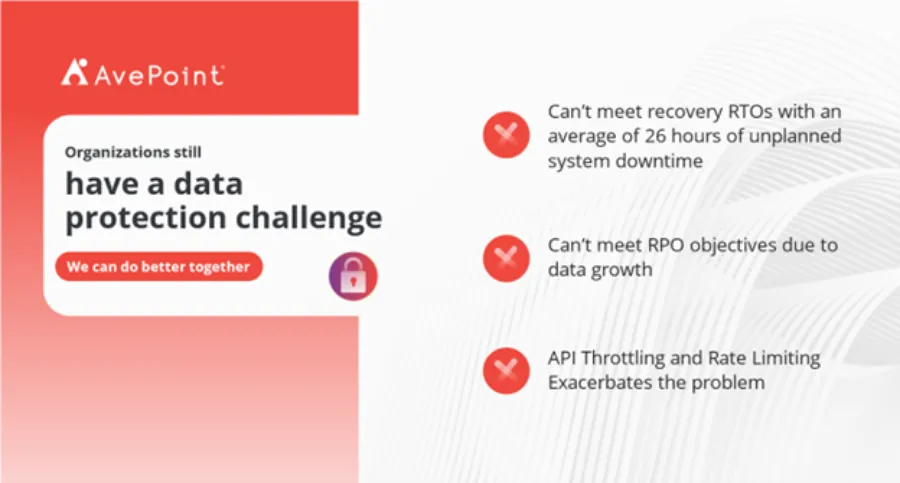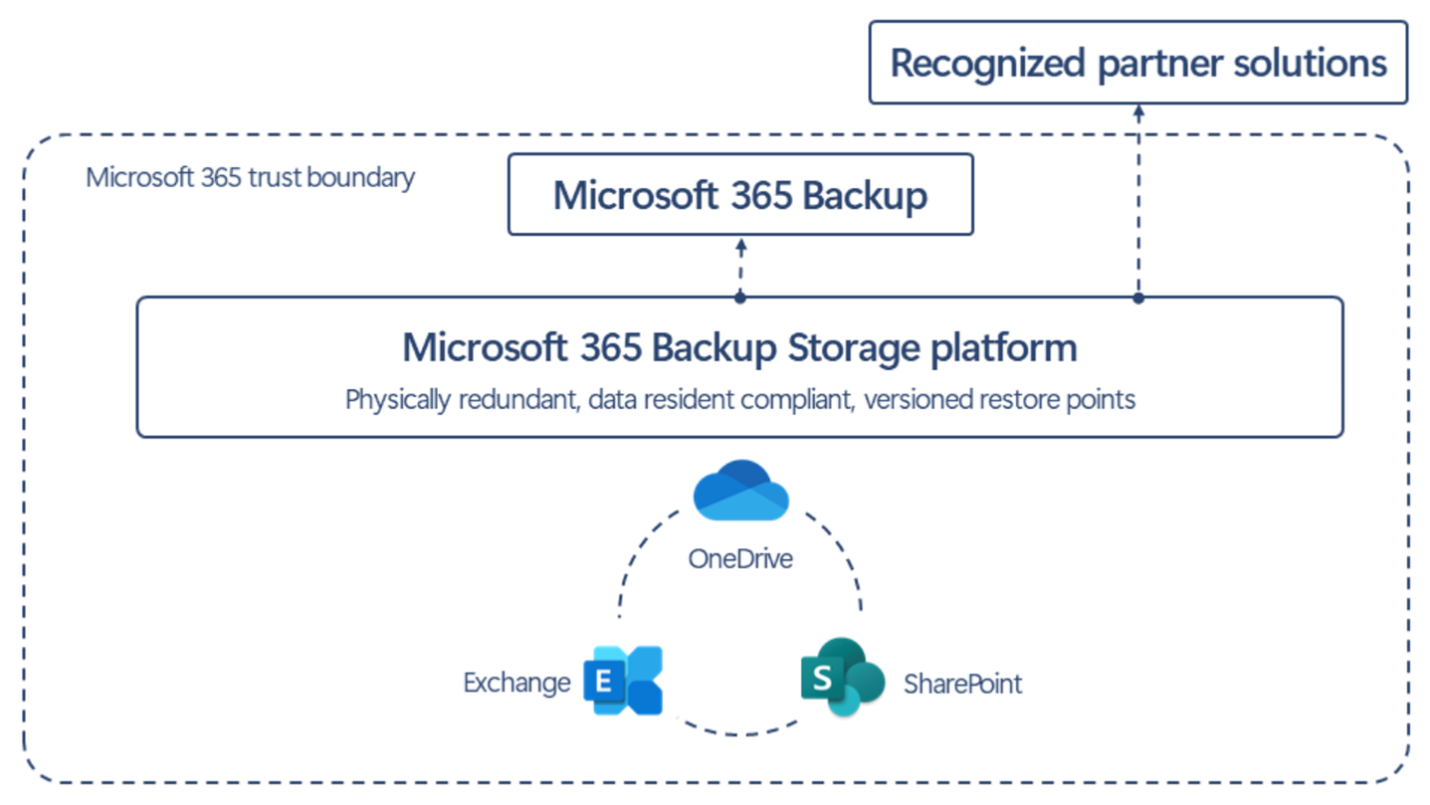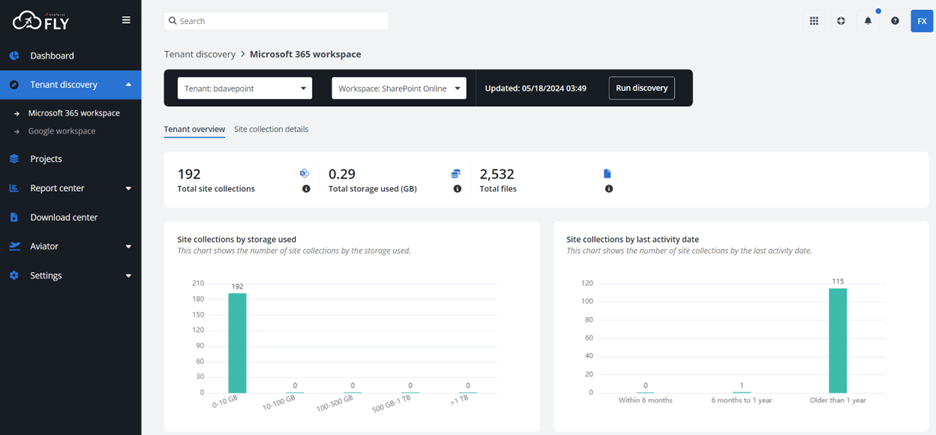Future-Proof Your Data with Express Recovery: How to Boost Your Data Resilience Strategy


Mass data loss events, ransomware attacks, and new AI-powered attacks continue to threaten enterprise data, including data within Microsoft 365. In addition, new updates to cybersecurity frameworks like the EU’s Network and Information Systems Directive 2 (NIS2), the Cybersecurity Maturity Model Certificate (CMMC) framework, and other regulations have stricter guidelines on ensuring continuity solutions are in place and tested.
The seriousness of these threats explains the debut of Microsoft 365 Backup Storage, which was shown off alongside Microsoft 365 Archiving at Microsoft Ignite.

Organizations know they need to manage and protect their data while meeting compliance and regulatory requirements. Yet, they are experiencing fundamental failures to execute. Notably, 59% of organizations struggle with data growth, consequently preventing users from getting enough recovery points within a 24-hour period.
This prompts us to ask:
- How is your organization satisfying regulatory requirements around securing data copies and managing data retention, among other requirements?
- How do you manage recovery in mass restore scenarios when facing rate limiting and throttling?
For instance, you need to recover thousands of mailboxes or OneDrives in less than 24 hours. Traditional SaaS backup is very good at granular, item-level recovery, full-fidelity backup, and so much more. But in the event of a mass recovery, traditional backup will be throttled or rate limited, preventing large-scale recovery, despite best practices and designs.
Microsoft 365 Backup Storage Introduces Unprecedented Data Recovery Speed

Microsoft 365 Backup Storage was designed to significantly enhance data resilience and ensure rapid recovery, even in the most demanding scenarios. With Microsoft 365 Backup Storage, you can:
- Leverage lightning-fast backup and recovery with low recovery point objectives (RPOs) and recovery time objectives (RTOs).
- Retrieve clean copies of any volume of data from OneDrive, SharePoint, and Exchange Online with minimal delay.
- Ensure compliance and data protection by staying within the Microsoft security and trust boundary.
- Automatically meet geographic residency requirements for data protection.
While Microsoft 365 Backup Storage’s express recovery offers unparalleled speed and efficiency, it’s essential to consider the broader implications of implementing such a solution. Organizations must balance the need for rapid recovery with compliance requirements, cost considerations, and long-term data retention strategies.
This is where AvePoint Cloud Backup Express comes into play, providing a comprehensive approach to managing these crucial aspects.
Balancing Compliance, Continuity and Cost with AvePoint Cloud Backup Express
While these express recovery capabilities can enable backup and recovery performance that’s 20 times faster than traditional backup solutions, they also cost more. Therefore, organizations need guidance in the following areas:
Maintaining Independent Backup Copies as Part of a 3-2-1 Backup Strategy
This applies when you need to maintain a copy of your data outside of the Microsoft Trust and when you need to back up different types of storage media.
Maintaining Copies to Meet Regulatory Compliance for Long-Term Retention
Businesses are governed by a variety of compliance frameworks like General Data Protection Regulation (GDPR), NIS2, Sarbanes-Oxley Act (SOX), Financial Industry Regulatory Authority (FINRA), Data Security Standard (DSS), National Institute of Standards and Technology (NIST), and others, obligating them to hold onto data for 5 years, 11 years, or more.
Learn more about how AvePoint balances these needs in this blog post.
Ensuring the Levels of Protection and Cost Match the Value of the Data
Don’t pay more to protect data that is low value. More crucially, don’t pay to backup ROT data. AvePoint’s research found that 50% of organizational data is over five years old, likely containing redundant, obsolete, and trivial data. So much money is being wasted keeping it when it can be defensibly disposed of.
Protect What’s Important
You might be thinking: “I cannot possibly afford to protect everything with this premium level of protection, so how do I decide what to protect and what is important? To do that, I need to understand where are people working, how much work is being done there, how important is this work, among others.”
AvePoint tyGraph tells you where people are working:

AvePoint Fly tells you how much data is there:

AvePoint Insights gives you the risk score:

And AvePoint Cloud Backup tells you if you’re successfully getting 4X backups and if your restores are being completed on time (4X daily).
By combining this data, you can understand what’s important. And then, assign “Express Protection” to that limited set of data so as not to break the bank. This information can help you identify lower tiers of data and apply 4X protection, 1X protection, or no protection for ROT data.
The Path to Robust Cyber Resilience
While having all of this data at your fingertips is powerful, getting continuous assessments of your data landscape is even better. The business value of data will change, and the sensitivity of the content might increase or decrease. No matter what the case may be, you will need a data resilience strategy that is ready to adapt at all times. This is why we’re so excited about some of our innovative features coming in 2025. We can’t wait to show you more about how we’re going to help organizations make more intelligent decisions about their data protection strategy in our upcoming AvePoint Innovates Webinar.


Shyam Oza brings over 15 years of expertise in product management, marketing, delivery, and support, with a strong emphasis on data resilience, security, and business continuity. Throughout his career, Shyam has undertaken diverse roles, from teaching video game design to modernizing legacy enterprise software and business models by fully leveraging SaaS technology and Agile methodologies. He holds a B.A. in Information Systems from the New Jersey Institute of Technology.


